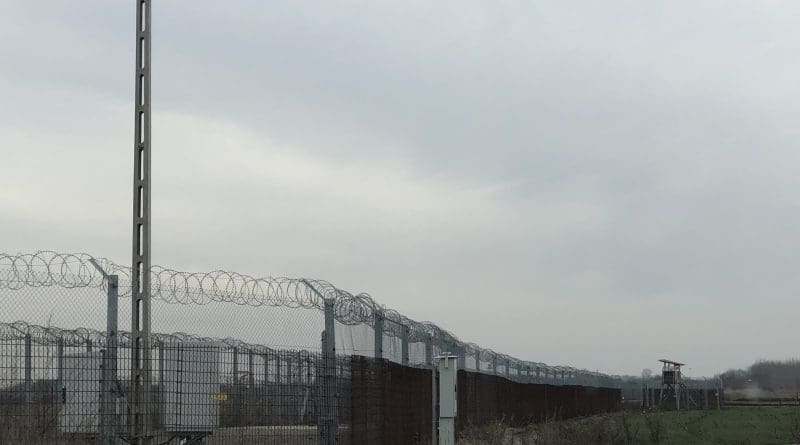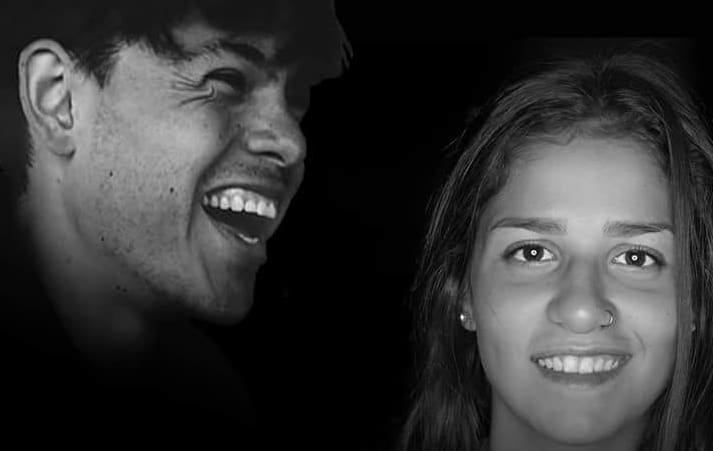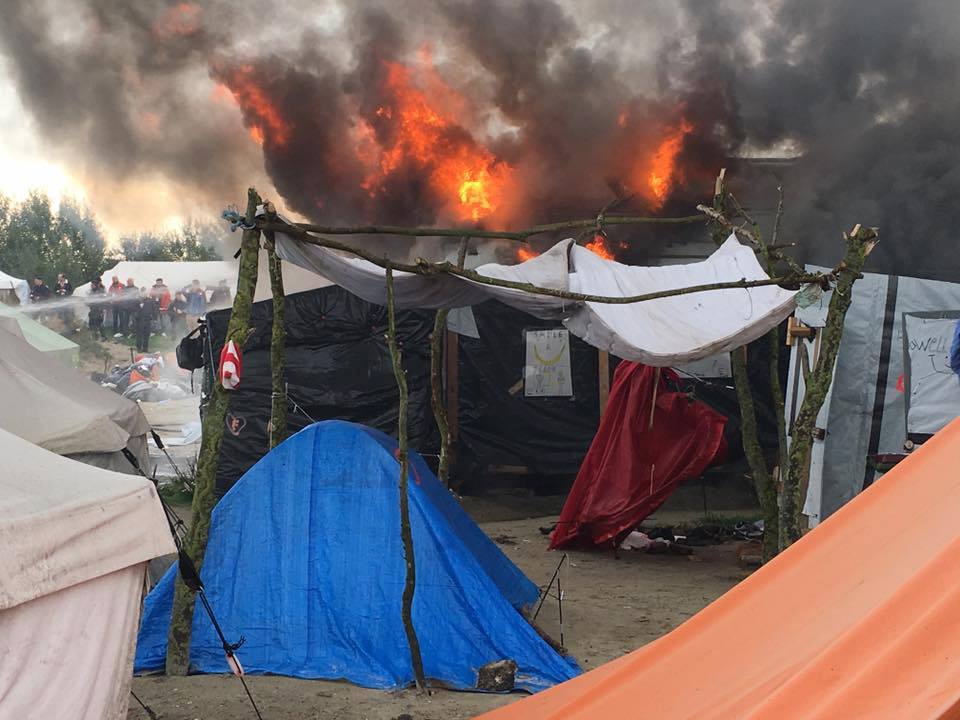The Balkanroute, Three Years On
by Ziad Reslan for the Kennedy School Review (ed.: Alyssa Davis)
10 September 2018 (original post)
Adnan lifts his shirt to reveal bruising covering almost his entire body. The only interruption to the purple are deep red scars—the result, he says, of trying to cross the border between Serbia and Hungary nineteen times. Each time, he has been apprehended, beaten up and pushed back to Serbia. He would never have left his native Pakistan more than a year ago if he knew the odds he would face. Now, with no money left and family back home pressuring him to go on, he has no choice but to keep trying. Adnan turns sixteen next month. He is one of several thousand unaccompanied minors currently traveling across Bulgaria, Serbia, and Hungary—known as the Balkanroute—fleeing violence and crippling poverty and hoping to make it to Western Europe.
The heightened refugee crisis of the last few years has brought international attention to the Balkanroute. Almost a million refugees, mostly Syrians fleeing a brutal civil war, attempted to reach Western Europe in 2015 alone. Although many traveled by sea to Greece and Italy, others chose land routes, with reporters tracking their progress as they made their way from Turkey to Bulgaria, Serbia, Hungary, and onto Western Europe.
But the Balkanroute has been used by refugees of many nationalities since Communism’s fall opened up the countries along the route. In the 1990s, Armenians traversed the route, fleeing their country’s war with Azerbaijan. Bosnians fleeing the Yugoslav wars followed. In the early 2000s, Afghans and Iraqis started making the journey as their countries were engulfed in conflict. Through it all, the route has endured, with the nationalities of those using it reflecting the conflict of the day.
Three years after the height of the refugee crisis, the deluge of migrants traveling along the Balkanroute has not stopped. Countries along the route have taken a number of steps to deter migrants—from thousands of additional border guards to double-layered electrified fences to slashing migrant integration programs. Those steps have not stopped people from coming, but rather have served to make the already grueling journey even more miserable for the thousands who continue to traverse the route.
I became more familiar with the Balkanroute by following it earlier this year, accompanying migrants from Bulgaria to Serbia, Hungary, and onto Slovakia. I undertook this journey, with a research partner from the Kennedy School, as part of a research project we were conducting for the US state department. On the 2,500-mile journey, we stopped at border crossings, checkpoints, and refugee detention centers to see what the Balkanroute is like today.

Bulgaria – The First Stop in Europe
From the Turkish-Bulgarian border, refugees usually find their way to the Bulgarian capital, Sofia. Block after block of bunker-like apartments stand as reminders of the country’s recent Communist past. Only grand orthodox churches puncture the Soviet-esque brutalism.
On a brisk Saturday morning, “Learn to Donate,” a cross-school initiative to bring Bulgarian and refugee children together, hosted an event to teach kids aged seven to eleven to bake. The eleven refugee children in attendance included five from a single Afghani family, three Syrians, and two Iraqis. Teachers, who had volunteered to organize the event, interrupted haphazard dough-kneading to start chanting Bulgarian songs. Although some of the children had been in the country for less than a year, they sang along in fluent Bulgarian. Abdel Wahed, eleven, had only been in Bulgaria for a year after fleeing Syria, but told us he found Bulgarian to be an easier language than his native Arabic. Two hours in, I found him sprawled out on a couch; he said he had no idea cooking would be this tiring.
Once the event ended, the kids had to go back to the reality of their lives as refugees. The five Afghanis were shepherded by the older sister to the refugee detention center where they live. Including their parents, the family of seven shares one room. Abdel Wahed and his two sisters, Jana and Mariam, were picked up by their parents to start the hour-long commute to the apartment they had recently moved into.

Abdel Wahed’s dad, Abdullah, told me that they had moved five times in the span of one year. Most Bulgarian landlords refuse to rent to Syrians, he explained. They have had to settle for shoddy buildings with unsanitary conditions; their last move was prompted by a rat infestation that the landlord refused to deal with. He was thankful that he had found their current apartment, despite it being so far from the city center. He suspected the only reason the Bulgarian landlord had agreed to rent to them was because his wife was Syrian. Throughout the Wahed’s family ordeal, they had received no support from the Bulgarian government, even though it had approved their asylum application.
Conditions for refugees were not always so bad in Bulgaria. Prior to 2015, Bulgaria had an ambitious integration program and supports for all asylum seekers whose application were accepted. The state provided rent assistance, a living allowance and language classes for one full year—all intended to facilitate integration. When the number of asylum applicants shot up more than ten-fold in 2015, Bulgaria eliminated its integration program altogether.
Things are worse for those whose asylum applications are rejected. They are held in a detention center for up to eighteen months while their repatriation is arranged. Repatriation, if it occurs, requires the cooperation of origin countries in order to issue travel documents and facilitate passage. Towards the end of my time in Bulgaria, we met Mariana Marinova, the Bulgarian Migration Directorate’s deputy. According to her, “Cooperation from embassies of origin countries is often lacking, with some countries not having an embassy in Bulgaria to begin with.”
If repatriation cannot be arranged and the eighteen months lapse, Bulgaria is obligated by law to release those detained. Radostina Pavlova, a legal counselor with the Center for Legal Aid – Voice in Bulgaria, said those released are often referred to as the “invisibles.” Pavlova added, “They have no identifying documents, are not allowed to work, and often depend on charity to survive.” No statistics are kept of how many “invisibles” are currently in Bulgaria.
Despite the challenges, Abdullah remains optimistic. With an approved asylum application, he and his family are not at risk of deportation. “Once I started speaking Bulgarian, even if not fluently, I found Bulgarians to be much friendlier,” he said. “They are just as hospitable as Arabs, but need a little bit more time to warm up.” Abdullah plans to stay in Bulgaria to re-build his life with his family here after three years of nomadic living.

Serbia – A Transit Stop
Winding roads abutting the Balkan Mountains and Danube river stand between Sofia and Belgrade, Serbia. Dating back to the fourth Century BC, the Serbian capital is one of Europe’s oldest cities. Today, it’s a hodgepodge of architecture: ancient ruins and imposing soviet-style blocks juxtaposed against new sleek towers in the city center. Unlike Sofia’s empty streets that feel like they were built with a population ten times as large in mind, the streets of Serbia are overcrowded and bustling, with Serbian drivers ignoring lane markings and speed limits.
Serbia is not a member of the EU and is a relatively poor country in the region, meaning virtually no refugee wants to settle here long-term. Perhaps as a result of this, Serbians have been more accommodating to refugees, offering them help and support on their transit through this small country.

Standing across from the central bus station in Belgrade is the Refugee Aid Miksalište center, a drop-in center open twenty-four hours a day. The center is staffed by NGOs that provide language classes, legal counseling, and medical support. Shouts in Pashto and Urdu echo on the center’s high ceilings. Everywhere in sight, refugees huddle around extension cords charging their phones—their only means to connect to family back home and, in many cases, to connect to smugglers promising to get them across the next border.
In one corner, Save the Children operates a space for migrant youth. Jelena Besedic, an advocacy manager for the NGO, says that the most concerning trend from the last two years has been the rise of unaccompanied children traversing the Balkan Route. She says more than fifty percent of Afghans, and one out of four of all refugees arriving in Serbia are unaccompanied minors as young as eight.
Save the Children provides on-site counselors to help kids process their traumatic experiences, including many cases of survival sex along the route. Nearly all of the kids in their care end up leaving Belgrade to continue on west, making longer-term care impossible. Still, Jovan Grubic, a field officer with the NGO, stressed that their organization “provides kids with services they need, including medical referrals and legal counseling.” At the very least, the volunteers serve to remind the kids that someone is looking out for them.

Within the youth space at Miksalište, one wall is dedicated to children under the age of nine. Counselors help kids draw themselves as superheroes, able to take on the troubles ahead. The wall’s cacophony of color stands in contrast to the other austere walls riddled with legal rights and educational pamphlets. By my count, 131 superheroes stood on guard on the wall. Ninja turtles were proudly embroidered with their creators’ names: Mohammad, Farouk, Dalia. Superman lookalikes with Samd, Luma, and Nada on their chest instead of an S. The fading of some superheroes testified to how those who originally made them are now far from Belgrade; the bright colors of others a reminder the flow of children continues unabated.
Another wall is for teenagers. In Arabic, Urdu, Pashto and English, kids had written about their experiences. A vent for their trauma, explained Grubic.
The wall does contain some heartwarming stories. Karam, an eleven-year-old from Iraq, wrote in Arabic that he’d been in “Turkey, Bulgaria, and now Serbia” and had for the “very first time seen a gazelle and played with toys he’d never seen before.”
Dunia, a nine-year-old Iraqi writing in English, said that she’d “seen a lot of camps [along the way] that had many organizations helping people and distributing food and clothes.” When she grows up, she concluded, she wants “to work as a humanitarian helping people.”
Other stories are more somber. Fatima, a twelve-year-old Syrian, wrote that back in her country, she “remembers living in safety and wanting to grow up to become a lawyer … and then [she] came to Europe because they said this is where human rights are, but all [they have] experienced is fear and hunger.”
There was no white space on this wall. Every inch claimed by words from a story, every story a reminder of a journey in progress.

Serbia-Hungarian Border: the Final Frontier
The Serbia-Hungary border is a crucial point for refugees on the Balkanroute. If they are able to make it through here, they will have entered the Schengen Area, an area comprised of twenty-six EU member states with no border controls (at least not officially). Once inside Schengen, refugees can more easily get to Western Europe.
In 2016, Hungary built a two layer high-security electrified fence spanning the entire border with Serbia and Croatia to physically keep refugees out. Then, they recruited more than three thousand “border hunters,” basically citizen vigilantes, on top of the existing ten thousand official police and army forces, to help patrol the border. All this has meant that fewer refugees have been able to illegally cross the Serbia-Hungary border, as they often get caught and are then beaten and pushed back across the border to Serbia.
But many refugees still try, in an exercise that has become euphemistically known as the “Game.” Some refugees have attempted the “Game” more than thirty times, with many of them carrying the scars to prove it.
On the Serbian side of the border, Rigardu, a German NGO, provides support to refugees at the border. They trek twice a week to a set of abandoned buildings that migrants have taken refuge in, mere meters from the electrified wire fence. Luisa and Sophie, a German and an Austrian volunteer, drive a large van with a one thousand liters of water, a water heater, and tidy piles of clean clothes in the back. Twice a week, they come to this spot to provide refugees with a hot shower and toiletries. They take the refugees’ dirty clothes to wash, and give them a clean set. Skin diseases, Luise explained, have been on the rise among migrants. A hot shower and clean clothes keep them from spreading.

As soon as the van parked at the entrance of an abandoned warehouse, refugees started showing up. Within minutes, seventeen men were greeting Luise and Sophie warmly and expertly helping to set up the five shower stalls, the water heater, and the car battery they use to charge their phones. The abandoned space became abuzz with music, as one refugee set up a stall to give his counterparts haircuts and a line formed for the shower. It was here that I met Adnan. He had been living in this abandoned warehouse for the last year, using it as a refuge after each of his nineteen failed attempts at crossing the border.
Apart from providing basic services to migrants, Rigardu also documents violence perpetrated at the border. Between May and December of 2017, Rigardu recorded 857 instances of refugees subjected to violence at the hands of Hungarian police and vigilantes. Fifty-two of those incidents involved minors. Nathalie Gigla, Rigardu’s head coordinator, told us that the lack of prosecution of border violence has only emboldened Hungarian border control.

Those wanting to legally enter and claim asylum in Hungary now have only one option—they must enter at one of two designated transit zones at the border. Once in the transit zone, they are held in shipping containers until their asylum application is decided, which can take anywhere from a few months to over a year. If their application is rejected, they are sent back to Serbia. Only five asylum applicants are accepted per day at each of the transit zones, and only on working days. This means that Hungary now only accepts a little over a thousand asylum applicants a year, with thousands others wanting to claim asylum held back in Serbia awaiting their turn on a constantly growing waitlist to even have a chance at applying. This backlog makes attempting to illegally make the crossing from Serbia to Hungary the more attractive option, despite the dangers.
Hungary, like Bulgaria, does not keep records on the number of rejected asylum seekers who remain in the country. James Peter, a Ugandan who took refuge in Hungary more than a decade ago, started MigHelp, an NGO that assists refugees in Hungary. He said migrants who have garnered asylum status have been using creative ways to assist fellow migrants whose applications were rejected. Some refugees in Hungary, Peter explained, loan out their health cards to “invisibles” so that they can get proper medical attention when needed.
* * *
Three years after the refugee crisis reached its height, the Balkanroute remains. In 2015, nearly a million migrants used the route, mainly to get to destination countries in Western Europe. In 2017, according to the EU border agency Frontex, that number dropped significantly, to approximately twelve thousand.
But traversing the Balkanroute is now much more daunting: from double layered electrified fences, to vigilante guards, to virtually no state support for migrants. With Bulgaria, Hungary, and Serbia all at the bottom of the list of European countries in Transparency International’s corruption rankings, it is not surprising that smugglers paying bribes to border control officials have become a surer way to get across. The biggest winners from the militarization of borders appear to be smugglers and corrupt government officials.
Even among those who do make it across, migrants are now more likely to have their asylum applications rejected. This is because the demographics of those using the route have changed significantly–Afghanis, Pakistanis, and Iraqis have overtaken Syrians as the main route users, and are often considered “economic migrants” and not refugees. The migrants using the route today are thus far more likely to end up as “invisibles” on the streets of Europe. And while Syrians traveled mainly with their families, a significant portion of route-takers today are minors with no family to support them during the journey.
Hungary and Bulgaria argue that their measures have been effective given the sharp decrease in the number of refugees using the Balkan Route. This claim may be true for the Balkans, but their actions have not stemmed the tide of refugees in Europe overall. Tightening the nozzle of the Balkan Route has only led to refugees taking more dangerous routes through the Mediterranean, with many more losing their lives in the process. Such is the desperation of those fleeing that they are still willing to come even as stories of the dangers trickle back home.

Ziad Reslan, JD MPP, is Lebanese and Syrian and worked as a corporate litigation attorney for several years before devoting his career to international public policy and migration issues. His words and photos appear here with his kind permission.





